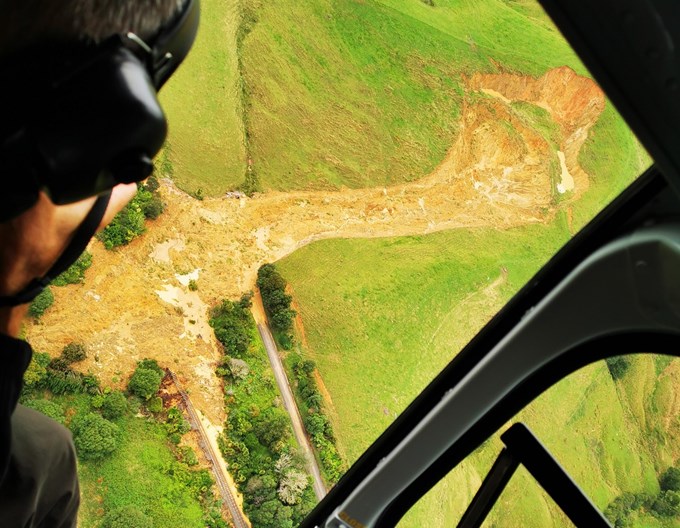Landslides can be small and localised or extend for kilometres, and are defined as any movement of rock, debris or earth down a slope.
With landslides often occurring during, or very soon after, heavy rain, the Auckland Anniversary weekend 2023 storm, then February’s Cyclone Gabrielle, set the scene for ideal landslide conditions.
There were several thousand landslides across Tāmaki Makaurau during that time, with land and property impacted on a scale not previously experienced.
While the majority of the landslides happened on private property, council data suggests in the range of 800-1000 landslides occurred on council land, with the council’s Parks and Community Facilities Team responding to hundreds of reports of slips on council reserves.
Who is responsible for repairing a landslide?
Generally, damage from natural disasters is primarily the responsibility of the affected landowner. When it comes to a landslide on private property, council advice is always to speak to your insurer and EQC in the first instance. (Many Aucklanders have been doing this since the extreme weather events of 2023.) Landowners need to consider what they can do to protect their own property.
What should I do if I have concerns about a landslide coming from a neighbouring property?
If you have concerns about a potential hazard from a neighbouring property, it’s best to talk with your neighbour to see if there is a reasonable solution. Every situation is different though, so you may need to get professional or legal advice. Auckland Council has no role in situations of a purely civil issue between property owners.
What’s the least I should expect from a neighbour regarding a response?
If your neighbour’s land has moved and caused damage to your land, they may not be obliged to repair your land – unless their negligence caused the slip.
The reasonable response will always depend on the circumstances, and in many cases, it might be that landowners can meet their obligations simply by letting you know about the hazard, or by not carrying out work which could worsen the situation.
What is Auckland Council’s role in managing landslides?
Auckland Council has to provide information about natural hazards on Land Information Memorandums (LIMs). A LIM report is a summary of information that we hold on a property. The natural hazard information that goes on a LIM is required under the Local Government Official Information and Meetings Act, Auckland Council doesn’t get to decide whether to include it or not. You can find out more about LIMs here: aucklandcouncil.govt.nz/buying-property/order-property-report/Pages/what-is-lim.aspx
Auckland Council also has to implement the Building Act, which includes the placarding process where red, yellow or white placards are placed on buildings. Once these placards are put in place it then becomes the responsibility of the owner (with their insurer) to undertake assessments and manage the risk. You can find out more about the Rapid Building Assessment process here: aucklandcouncil.govt.nz/building-and-consents/Pages/inspections-building-assessments-flood-cyclone-damaged-properties.aspx
What happens when a landslide originating from council land spills onto private land, or vice versa?
Where private owners are concerned about slips on public land, the council will undertake an assessment and share that information with them. These situations are assessed on a case-by-case basis to determine if any action will be taken. In the majority of cases owners need to take their own advice and actions to protect or remediate their own property. The council will facilitate private works where reasonable; for example by providing access across council land.
How about when public safety is at risk?
Council’s resources are heavily constrained, but where there are compelling reasons based on public benefit and amenity (including public safety), or when council assets are at risk, the council may consider action to remediate landslides on public land. Public safety is always a critical consideration and where remediation is not possible, council will protect public safety with other options such as restricting access.
Where the landslide is on private land, even if members of the public might be exposed to the risk, the responsibility for the landslide generally lies with the landowner.
Will the council provide weed matting or polythene for people to try and rectify a landslide themselves in a park near their property?
The council does not normally provide equipment or materials for others to install, whether that be on private or public land. The council does do work with community groups where these risks can be managed. Auckland Council also has advice for replanting [PDF] on sites where a landslide has occurred.
What about when landslides go onto roads?
Auckland Transport (AT) will, where appropriate, stabilise the parts of an AT road that have been affected, and remove any debris that had fallen onto their road and are posing a risk.
If the landslide has also affected adjacent private land, the landowner would be responsible for repairing and holding the land that supports their property, and should have their insurer and EQC investigate. AT has further information about landslides and public roads on their website as well as information on road repairs from the Auckland storms.


